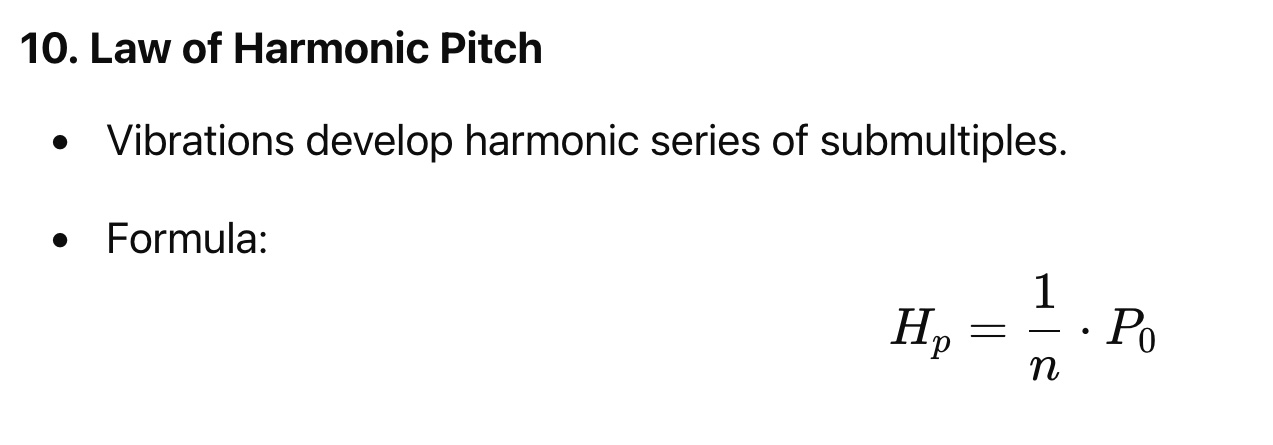"Any aggregate in a state of vibration develops in addition to its fundamental pitch a series of vibration in symmetrical sub-multiple portions of itself, bearing ratios of one, two, three, or more times its fundamental pitch." [Keely, 1894]

"A rod fixed at both ends and caused to vibrate transversely divides itself in the same manner as a string vibrating transversely.
But the succession of its overtones is not the same as those of a string, for while the series of tones emitted by the string is expressed by the natural numbers, 1, 2, 3, 4, 5, etc., the series of tones emitted by the rod is expressed by the squares of the odd numbers, 3, 5, 7, 9, etc."
"A rod fixed at one end can also vibrate as a whole, or can divide itself into vibrating segments separated from each other by nodes.
In this case the rate of vibration of the fundamental tone is to that of the first overtone as 4:25, or as the square of 2 to the square of 5. From the first division onwards the rates of vibration are proportional to the squares of the odd numbers, 3, 5, 7, 9, etc.
With rods of different lengths the rate of vibration is inversely proportional to the square of the length of the rod." [John Tyndall, Sound]
See Also
Additive and Subtractive Synthesis
Creative Force
difference tone
Fibonacci Series
Figure 14.01 - Overtones Developed Musically Showing Up as Isotopes along the Vertical Axis of this Chart
Figure 8.5 - Summation Tones
Figure 8.6 - Difference Tones
Fundamental
Harmonic
Law of Harmonic Pitch
Law of Harmonic Vibrations
Laws of Vibration
Mid-tone
Overtone
Overtone series
Part 12 - Russells Locked Potentials
Polar
Undertone
Universal Energy Unit
8.17 - Law of Harmonic Vibrations
9.9 - Sympathy or Harmony Between Harmonics or Overtones
12.06 - Mid-Tones and Neutral Centers
